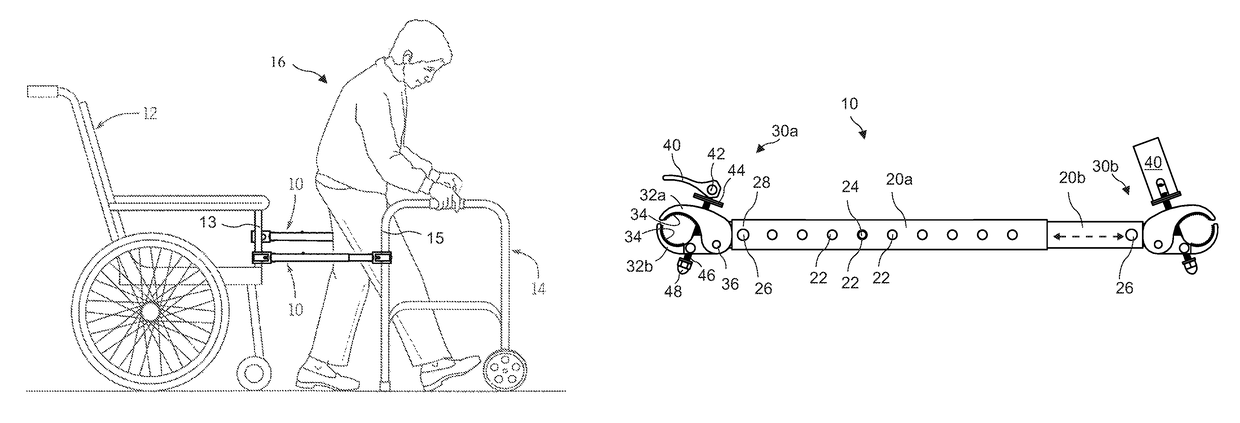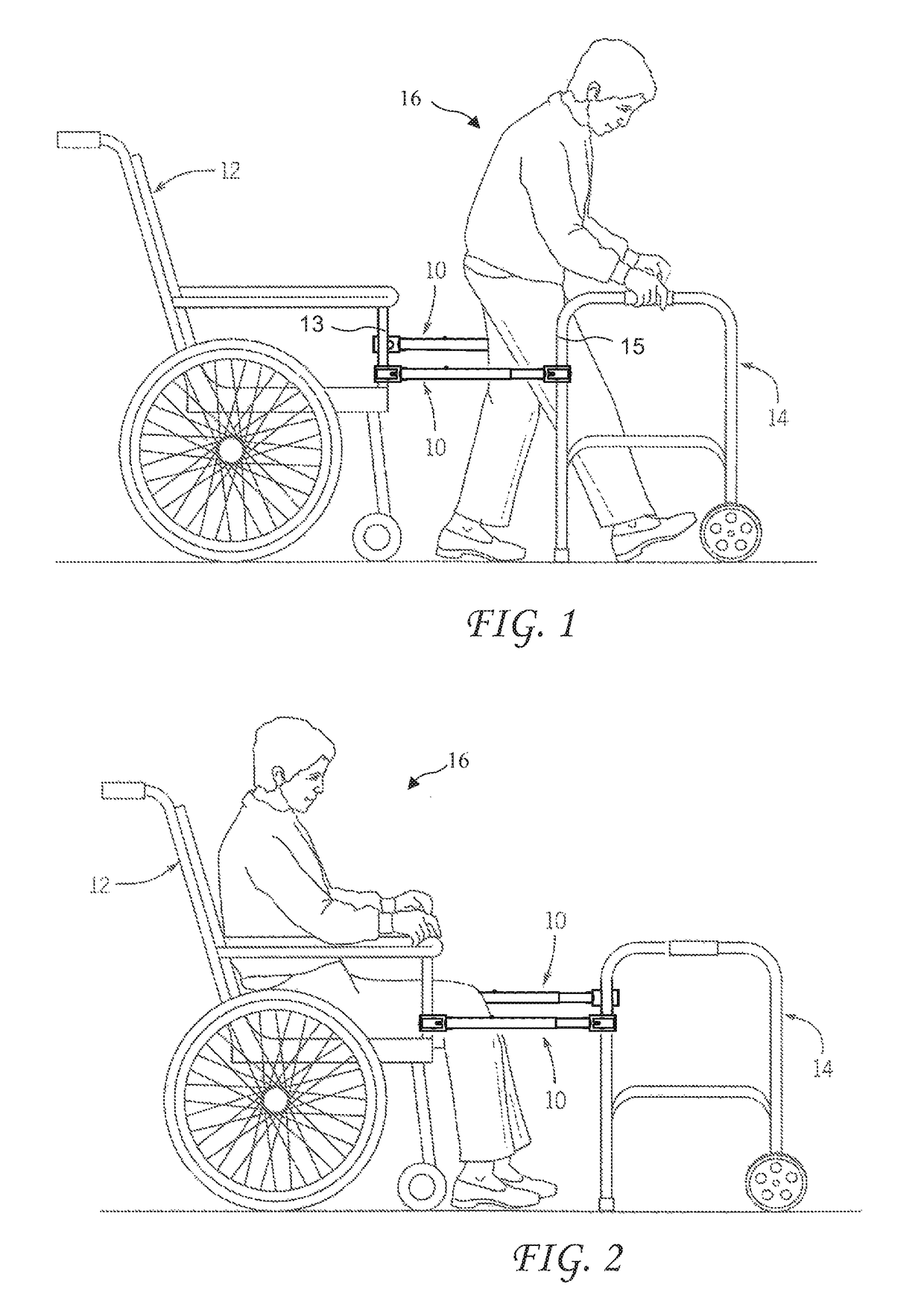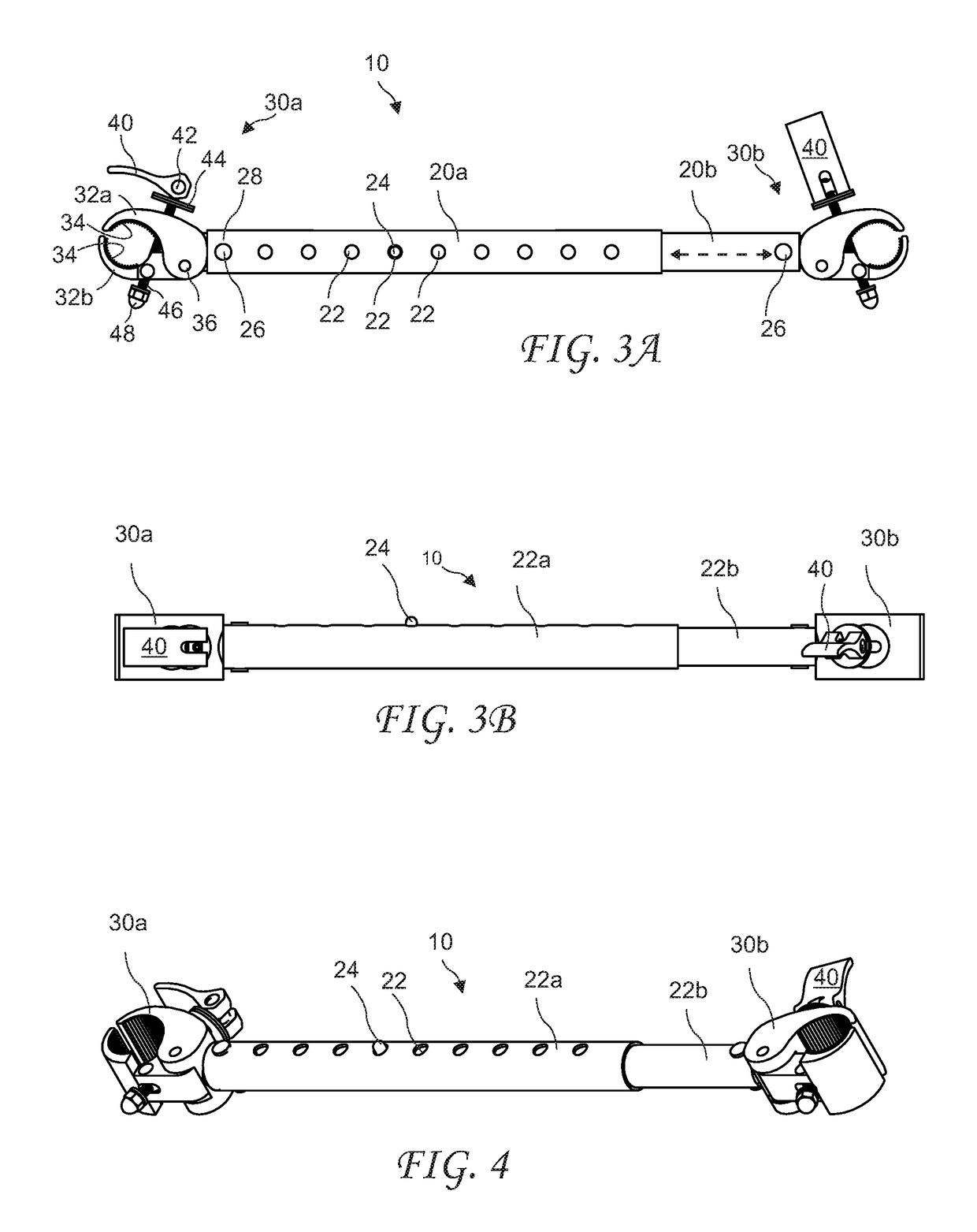Apparatus and method for assisting patient walking therapy
a patient walking and apparatus technology, applied in the field of physical therapy, can solve the problems of not positioning the wheelchair directly behind, the patient is often required to go through a long recovery therapy process, and the wheelchair is often difficult to sit directly behind, so as to facilitate the patient walking regaining their ability to walk, build strength, endurance and balance, and facilitate the patient's recovery. the effect of rehabilitation
- Summary
- Abstract
- Description
- Claims
- Application Information
AI Technical Summary
Benefits of technology
Problems solved by technology
Method used
Image
Examples
Embodiment Construction
[0022]The following description is of the best mode presently contemplated for carrying out the invention. This description is not to be taken in a limiting sense, but is made merely for the purpose of describing one or more preferred embodiments of the invention. The scope of the invention should be determined with reference to the claims.
[0023]Where the terms “about” or “generally” are associated with an element of the invention, it is intended to describe a feature's appearance to the human eye or human perception, and not a precise measurement.
[0024]A patient 16 is shown walking between a wheelchair 12 and walker 14 connected by two couplings 10 according to the present invention is shown in FIG. 1 and the patient 16 seated in the wheelchair 12 connected to the walker 14 by the couplings 10 is shown in FIG. 2. Coupling the wheelchair 12 to the walker 14 allows physical therapists, occupational therapists, and patients / family members to assist the patient 16 while practicing walk...
PUM
 Login to View More
Login to View More Abstract
Description
Claims
Application Information
 Login to View More
Login to View More - R&D
- Intellectual Property
- Life Sciences
- Materials
- Tech Scout
- Unparalleled Data Quality
- Higher Quality Content
- 60% Fewer Hallucinations
Browse by: Latest US Patents, China's latest patents, Technical Efficacy Thesaurus, Application Domain, Technology Topic, Popular Technical Reports.
© 2025 PatSnap. All rights reserved.Legal|Privacy policy|Modern Slavery Act Transparency Statement|Sitemap|About US| Contact US: help@patsnap.com



